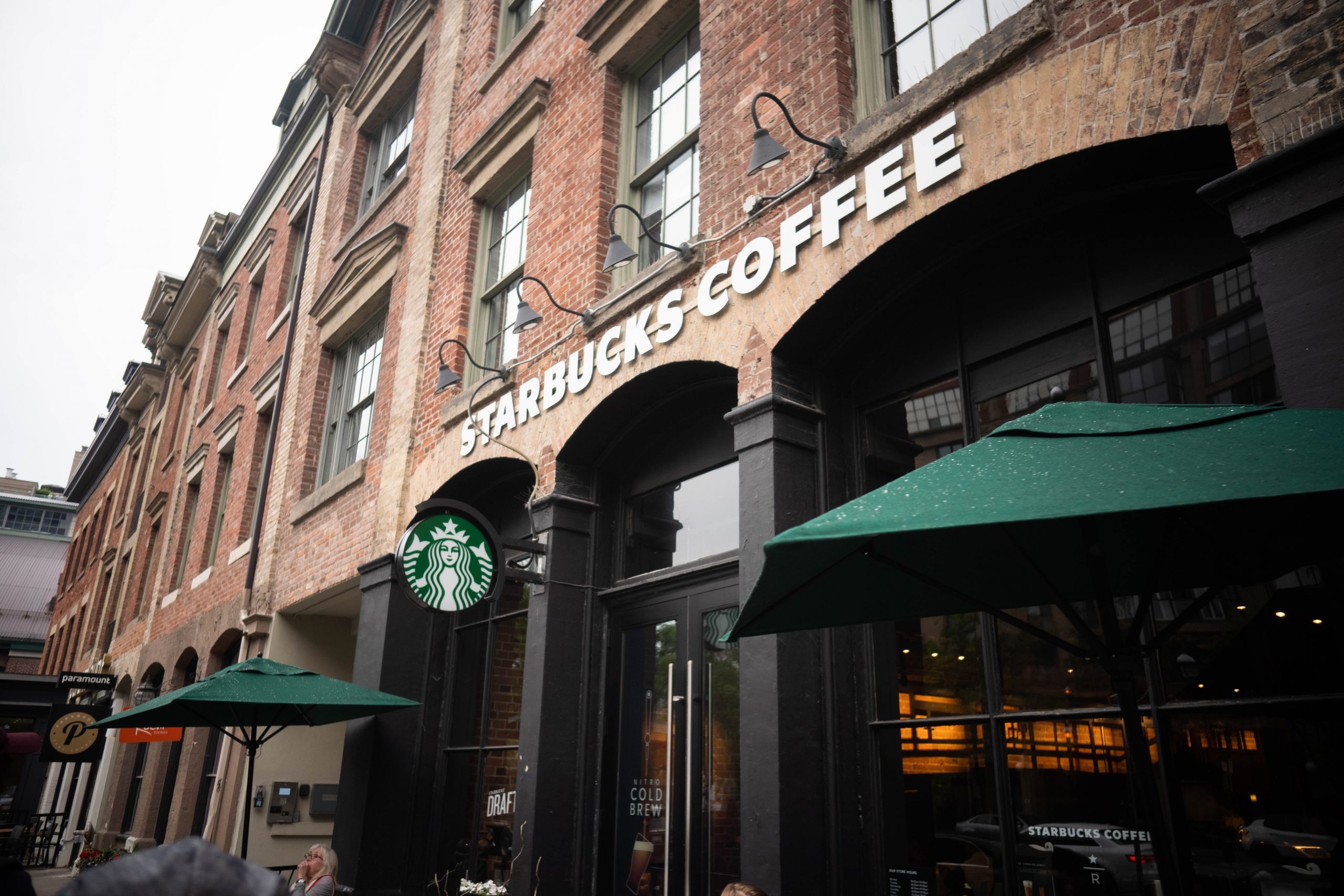
The nation is currently facing its most significant labor movement in almost a century. The people who pour your coffee and misspell your names on cups are at the forefront of this movement. Starbucks locations across the country are filing for union elections.
After decades of lower and lower union participation, workers for the coffee giant are coming together in a big way. This fight began months ago, in late 2021, when two Starbucks locations in Buffalo, New York, filed for union elections.
This election happened despite extensive and questionable actions on Starbucks Corporate to curb these elections. Starbucks flooded these locations with new workers from nearby areas to stall the voting process.
They had corporate managers sit in on the day-to-day operations of the coffee shops and even had former Starbucks CEO Howard Schultz give an anti-union seminar to the employees.
In leaked messages between Starbucks management, we see the company was afraid that if just these two locations were able to unionize, it would set a precedent for places across the country. Their fears have become a reality.
On Jan.31st alone, Starbucks Workers United, the group helping to organize union efforts, announced on Twitter that 15 more stores in a dozen states had filed for union elections.
Most recent reports put the total number of stores who have filed, are in the process of, or have voted in favor of unionizing at 59 locations. These locations stretch from coast to coast, inhabiting 19 states in every corner of the country.
Of these stores, there is even one here in Atlanta. The Howell Mill Starbucks location has submitted a union petition to the National Labor Relations Board. In this letter, the local store explained their reasons for wanting to unionize.
“Whether tenured or a green bean, we partners came to Starbucks because of the mission and values you publicly proclaim to uphold. Now, we unite together to hold Starbucks accountable for these claims.”
While a fast-food chain like Starbucks may have been unlikely to be the vanguard of a labor movement, several factors allowed the workers to be in this position.
Like the Howell Mill location stated in their letter, Starbucks has espoused very progressive ideals since its inception. The company has publicly backed many social and civil rights movements over the years.
Not only does this add pressure for the company to bring their public branding in line with their internal policy, but this perception also brings in a workforce that is generally more interested in topics such as workers’ rights.
Perhaps even more critical to the success of this union movement is the place where it began. New York is the most heavily unionized state nationally, and Buffalo itself has a long tradition of worker solidarity.
The familiarity this area of the country has regarding unions mixed with the expectations a company like Starbucks should meet allowed this movement to start. Much to Starbucks’ chagrin, what began as one location evolved into 59 locations across the country in just over a month.
The high turnover within the industry generally keeps fast food companies from having a high union rate. There is typically a high quantity of younger people going in and out of stores like these, which does not lend itself to unionization.
Starbucks is just one of many companies and industries seeing significant shifts within the last year. Millions of Americans are finding new jobs or retiring altogether in what many have dubbed the “Great Resignation.”
Minimum wages have increased around the country for the first time in decades. This fact, mixed with unions at Starbucks and other companies, all create what is truly a once-in-a-lifetime event in our nation’s history.
John Logan, a labor studies professor at San Francisco State University, put into context how Starbucks workers are on the frontline of this battle.
In a message to the New York Times, Logan stated, “In terms of creating a moment for unions, if you organized 100 stores, it would be the biggest thing that happened in 50 years.”
With 59 stores registering for union elections in just over a month, the 100 location figure does not seem all that unattainable.
While these factors may seem hopeful for the future of the labor force, there is a dark spot on an otherwise shining achievement.
While dozens of stores are in various states of the union election process, the other half of the battle comes with negotiating a union contract with the company. This process involves going back and forth for months or even years as the union and corporate representatives approve or deny wages, time-off and other worker protections.
This heavily favors the company. With no real-time limit on how long a contract needs to be drafted, Starbucks can drag their feet as much as they want.
This situation is especially detrimental in the case of Starbucks workers. Employees at their stores are typically younger people who won’t work at the company’s exact location for very long.
This idea could spell bad news for the movement as Starbucks may try and just time out all employees at the forefront of this effort.
Even given the struggles, not only is this still a historic event in our country, but the amount of attention this movement has created will put a lot more pressure on Starbucks to carry out the negotiations in good faith.
As the situation develops over the next few months, we will be sure to update you on the latest.
